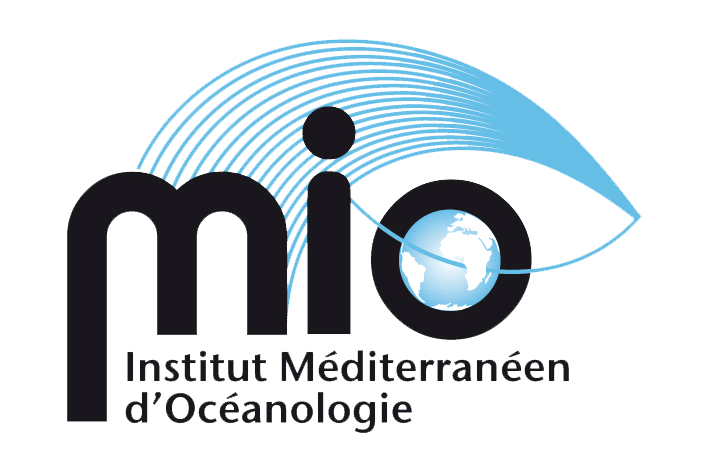Transfer of trace metals through coloured dissolved organic matter
Project manager : Cécile Dupouy
L'Equipe : Farid Juillot (IMPMC, Paris IRD), Hugues Lemonnier (IFREMER), Peggy Gunkel-Grillon (University of New Caledonia), Laura Boher (VSC CRESICA), Marie Bessard (IRD), Léocadie Jamet (US IMAGO LAMA, IRD), Philippe Gérard (US IMAGO LAMA, IRD), Stéphane Mounier (MIO, University of Toulon), Benjamin Oursel (MIO, University of Toulon), Marc Tedetti (MIO, Marseille)
Project duration March 2018-March 2021
Project partners
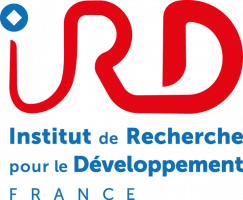 | 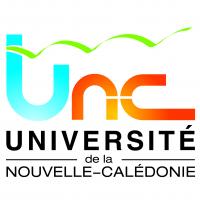 |
The website
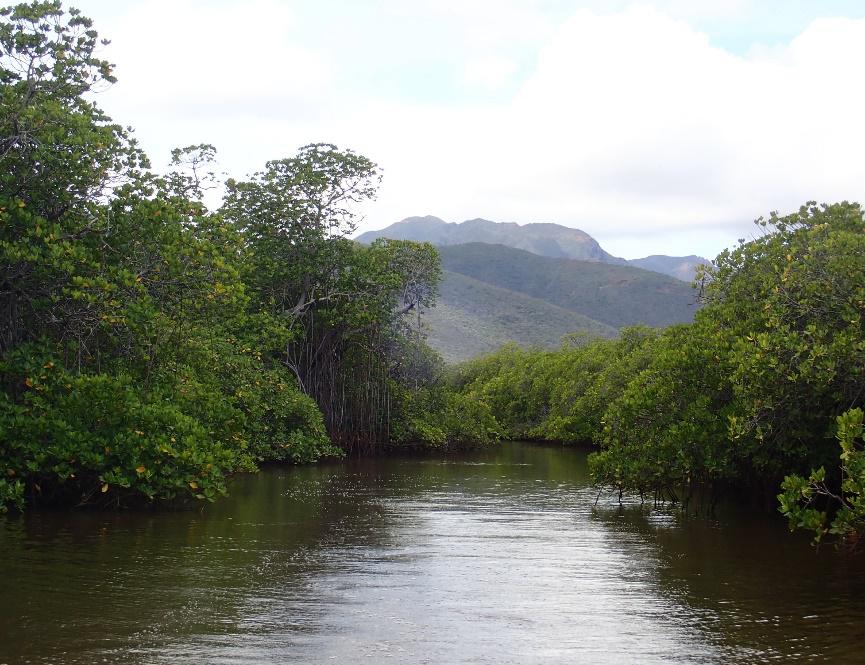
River in the north of New Caledonia bordered by mangroves
Photo credit: Laura Boher
The new INSU EC2CO TREMOR project - Transfer of trace metals through coloured dissolved organic matter - aims to complete the research work recently initiated by the MIO in New Caledonia, with a thesis on the Dynamics of coloured and fluorescent dissolved organic matter in tropical lagoons in the South Pacific - New Caledonia : climatic and anthropogenic influences" (Martias, 2018) focusing on FDOM in the waters of the New Caledonian lagoon, as part of the INSU EC2CO TREMOLO project (2012-2015), and as part of the CNRT DYNAMINE project (2015-2018).
It follows on from the CNRT-funded DYNAMINE (DYNAmique des métaux de la MINE au lagon) project (2015-2017), which looked at metal dynamics along the mining-river-lagoon continuum in the Koné region (Koniambo massif). TREMOR focuses on the river-mangrove-lagoon interface and complements previous studies on mangroves carried out by IRD, IAC and UNC.
Justification
The coastal soils of New Caledonia are characterised by the fact that they are essentially made up of laterites, which have been mined for decades for their content of trace metal elements (TMEs) such as nickel, chromium, cobalt and manganese. Because of their high organic matter productivity, mangroves constitute a major reservoir of dissolved organic matter (DOM) that can be transported to the ocean over long distances. The observations made have led us to question the sink/source role of these ecosystems in relation to the dynamics of DOM at the land-sea interface, downstream of the mining massifs in New Caledonia. The aim of the TREMOR project (2018-2020) is to provide answers based on the fluorescence properties of a fraction of the DOM, known as Fluorescent Dissolved Organic Matter (FDOM).
More specifically, TREMOR aims to gain a better understanding of the origin, sources and sinks of the DOM identified in the rivers and lagoon of New Caledonia and to assess the influence of this MOD on the diffusion and toxicity of TMEs on the coast downstream of mining sites. Comparisons with the geodynamics of mangroves in other regions (Brazil, Fiji, etc.) are envisaged due to the involvement of certain team members in other parts of the world. TREMOR is also contributing to the development of a standardised method (spectrofluorometry) that can be used to quickly and cheaply identify certain traces of human activity (waste water, fires, etc.) in fresh and marine waters.
Approach, method and skills used
This project brings together a range of skills in biogeochemistry, biology, geochemistry, chemistry and optics. Water samples are taken from the river and lagoon, and from the sediments (pore water), filtered in-line (micropore 0.2 μm) and stored until they are analysed by spectrofluorometry. The 3D fluorescence emission/excitation spectra are analysed using developed software (PARAFAC) to digitally extract the contributions of different fluorophores (natural, anthropogenic, etc.) and compare them with those found in other environments or at other times.
Laboratory quenching experiments (attenuation of fluorescence through complexation by successive addition in increasing logarithmic concentration) with certain ETMs (Cu and Ni) make it possible to calculate the complexation constants of the fluorophores and finally give an indication of the capacity of fluorescent CDMOs to form complexes and trap ETMs.
Field of study
The study site is made up of two rivers: the Temala River, which drains the volcanosedimentary terrain, and the Coco River, which drains the ultrabasic Koniambo laterite massif.) For each river, the samples correspond to a continuum of river (stations T1 and C1) - mangrove (stations T2/T3 and C2/C3) - mouth (stations T4 and C4) - lagoon (stations T5 and C5) in the bays of Chasseloup and Vavouto, respectively.
First results
The initial results available show that the Coco and Temala rivers have different geochemical signatures linked to the geological and pedological nature of the land drained. At both sites, TME concentrations increase sharply between the river and the mangrove swamp, and are very low in the lagoon. Of the fluorophores identified, three are common to the two rivers studied (humic type in the rivers and mangrove, fulvic type at the mouth and in the lagoon). The complexing properties of fluorophores in relation to Ni and Cu were confirmed. All these results suggest that the MODF certainly plays a role in the dispersion (dilution effect in the river), or non-dispersion (creation of autochthonous fluorophores in the mangrove), of TMEs at the river-mangrove-lagoon interface downstream of the ultrabasic massifs. However, a particular phenomenon of MODF aggregation/flocculation seems to occur during the mixing of fresh and salt water at the Coco site, which remains to be studied.
Outlook for TREMOR
MODF aggregation/flocculation mechanisms will be studied in particular in the laboratory at the end of 2019 (thanks to the support of a 3.5-month fixed-term contract). A campaign in March 2020 (thanks to the support of a lecturer from the University of Toulon, MIO, through CRESICA) will enable further study of the specific behaviour of MODF at the Coco site, by sampling the salinity gradient and focusing on the phase-particle relationship of the dissolved phase. A final mission in October 2020 will enable us to characterise the specific fluorophore of the mangrove, and to exploit all the results.
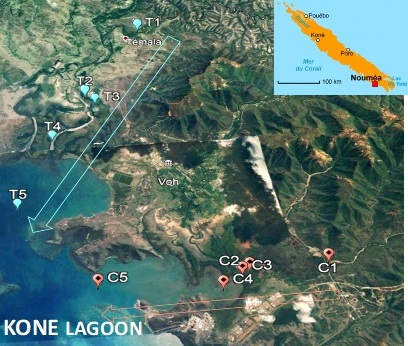
Map of stations sampled in the Temala and Coco rivers flowing into Koné lagoon in New Caledonia's North Province
Credit: Farid Juillot
References for further reading
Bessard, M., 2019. Complexation de la MOD avec les ETM Analyse par extinction de fluorescence sur un continuum rivière-mangrove-lagon dans la province Nord de la Nouvelle-Calédonie, Rapport de Master 2 Univ. Perpignan, Directions C. Dupouy and S. Mounier, 42 pages with appendices.
Boher , L., 2018. Analyse par quenching de fluorescence de la complexation de la MOD le long d' un continuum rivière-mangrove-lagon à Koné (Province Nord de la Nouvelle-Calédonie), Master 2 Report, Univ. Brest Labex Mer, 23 pages with appendices.
Boher L., Mounier, S., Juillot, F., Jamet, L., Dupouy, C., 2018. Saltmarsh organic matter fluorescence and metal interaction, Speed talk WOMS 2018, Carqueiranne, October 2018.
Dupouy C., Röttgers, R., Tedetti M., Frouin R., Rodier, Martias, C., M., Goutx, 2020, Influence of meteorological conditions on the distribution of CDOM and biogeochemical parameters in the Eastern lagoon of New Caledonia, Frontiers, Biogeochemical Responses of Tropical Ecosystems to Environmental Changes (in press).
Dupouy, C., Baumann, F., Bouard, S., Goirant, C., Lemonnier, H., Letourneur, Y., Meyer, M., Tatin, C., 2019. The "Along the River" program: a research and innovation project focusing on the integrated management of water, its uses and its governance in New Caledonia, in Abs. Booklet, p.7, STAR 2019 Conference, 19-23 November, Suva, Fiji.
Dupouy, C., Juillot F., Lemonnier, H., Bessard, M., Boher L., Jamet, L., Mounier, 2020. Influence of salinity gradient on Ni complexation by Fluorescent Dissolved Organic Matter (FDOM) and dispersal across estuaries in New Caledonia, OS3-8, EGU Vienna (Austria), 3-5 May 2020.
Juillot et al, 2019, DYNAMINE: Dynamique des métaux de la mine au lagon dans l'hydrosphère en Nouvelle-Calédonie. CNRT Nickel et son Environnement, Tome Nickel et Santé, Final report, October 2019, pp. 206.
Marchand, C., Allenbach, M., Lallier-Vergès, E., 2011. Geoderma relationships between heavy metals distribution and organic matter cycling in mangrove sediments (Conception Bay, New Caledonia). Geoderma 160:444-456. https://doi.org/10.1016/ j.geoderma.2010.10.015.
Martias, Chloé. 2018. "Thèse de Doctorat Dynamique de La Matière Organique Dissoute Colorée et Fluorescente En Zone Lagonaire Tropicale Dans Le Pacifique Sud ( Nouvelle Calédonie ): Climatic and Anthropogenic Influences." 235 pages
Martias, C., Tedetti M., Lantoine, F., Jamet L., Dupouy, C., 2018. Spatial distribution of chromophoric dissolved organic matter and trace metals in the New Caledonia tropical lagoon (South Pacific Ocean), Science of the Total Environment, 616-617, 438-452, doi: 10.1016/j.scitotenv.2017.10.261.
Mounier, S., Zhao, H., Garnier, C., Redon, R., 2011. Copper complexing properties of dissolved organic matter: PARAFAC treatment of fluorescence quenching. Biogeochemistry 106, 107-116. https://doi.org/10.1007/s10533-010-9486-6
Stedmon, C.A., Markager, S., Bro, R., 2003. Tracing dissolved organic matter in aquatic environments using a new approach to fluorescence spectroscopy. Mar. Chem. 82, 239-254. https://doi.org/10.1016/S0304-4203(03)00072-0
